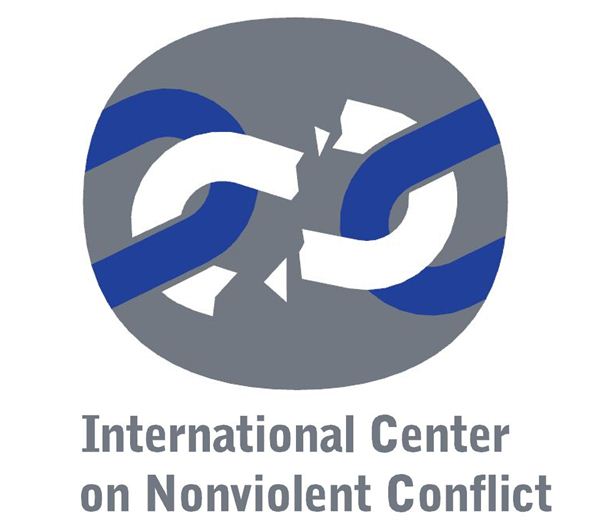Collection of writings (from Nov. 1982 to June 1985) by former East German dissident and radical ecologist. Covers issue such as North-South relations, the peace movement and the crucial role of communes in rebuilding an ecologically sound society. Includes his statement on resigning from the German Greens, claiming that they ‘have identified themselves -critically- with the industrial system and its administration’.
Explores high carbon footprint of military defence, argues for an alternative nonviolent defence, and advocates ‘active resistance’ of kind pioneered by Australian environmentalists.
Compares North American Friends of the Earth and Greenpeace.
Part I covers environmental philosophy and green political thought; Part II Green parties and NGOs; Part III policy making at international, national and local levels. This is a textbook, which gives guidance on other sources.
Examines development of Green movement in Western democracies. Argues that environmental interest groups are important new participants in the contemporary political process and that, if the movement is politically successful ‘it may at least partially reshape the style and structure of democratic processes in these countries’.
Discusses role of nonviolence in Green thought (and in original policy of German Greens) and case for nonviolent protest.
Comparative study of successes and failures of four environmental movements since 1970, exploring implications of inclusion and exclusion from political process.
Deals with the anti-nuclear power movements and government responses to them and their demands in eight West European states – Austria, Britain, France, Italy, the Netherlands, Norway, Sweden and West Germany.
Defends new forms of radical direct action, including ‘ecotage’, arguing that violence should be measured by harm inflicted, not use of physical force.
Includes campaigns against logging, tree plantations, factories and tourist facilities and in defence of nature reserves. Argues environmentalism in Asia has a local focus and is often a form of cultural and political protests where overt political opposition is too dangerous.
Covers range of environmental campaigns in different parts of the world, including Ireland, France, Israel, Japan, India and Indonesia.
Despite its title, this is not primarily about protest, but the international /state context in which protest occurs, stressing the UN and international agreements.
Explores impact of political, economic, cultural and religious conditions on environmental activism.
Primary emphasis on sociological analysis of how environmental movements change, with statistics on participation in them. Chapters on Germany, Spain and Southern Europe and the USA. Derek Wall writes on ‘Mobilizing Earth First!’ in Britain. Jeff Haynes, ‘Power, Politics and Environmental Movements in the Third World’ (pp. 222-42) includes specific references to the Chipko, Narmada and Ogoniland movements, as well as other forms of environmental action in Kenya and the role of the WTO.
(also Southgate Press 2010 and Kali/Women Unlimited 2011).
An eco/feminist argument about the special role of women in preserving the environment.
Analysis of the roles of different types of transnational organizations and their impact on environmental ‘discourse’, including Friends of the Earth and the World Wildlife fund. Chapter 3 is specifically on Greenpeace, direct action and changing attitudes. See also: Paul Wapner, Politics beyond the State: Environmental Action and World Civic Politics, 1995 , pp. 311-340 .
In the early 1980s, there were mass protests across the Western world with varied goals, for example to support different models of economic development, promote anti-militarism and non-violence, or redefine urban and social spaces. Many, however, saw safeguarding the environment as their primary goal and identified nuclear energy as their main target. The authors investigate the movement for as afer environment and how it mobilized large sections of society and provided people with new tools of civic expression.
This report by the feminist civil society body, Urgent Action Fund of Latin America and the Caribbean, focuses on the role of women in protecting and defending nature, and warns of increasing risks to their lives and environment. The report discusses ‘the extractive model’ and the social-environmental conflicts it creates, and also the disturbing militarization and violations of women’s rights, including those defending their environment. The report outlines proposals made by women for defence of territory, and also stresses the diversity of the approaches, organizations and activities developed by Latin American women.
This is a special issue on women’s organized resistance to the extraction of natural resources that has a damaging impact on their lives and environment. Articles cover movements in Bolivia, Colombia, Ecuador, Peru and Mexico and also Ghana, focusing on the importance of water as a vital resource, and also on women’s embodied experience of suffering from water pollution and scarcity. The articles also discuss gendered critiques of extraction.
The author analyzes the nature and power of extractive industries, their impact on local people, and how they prompt active resistance in North and Latin America. The book covers a wide range of extractive industries, including logging, hydroelectric dams, mining, and oil and natural gas.
Discusses early resistance in 19th and 20th centuries and contemporary campaigns against destruction of forests, dams, pollution and over-fishing of seas, and mining. Akula also describes Jharkand separatist ‘tribal’ struggle to own their historic land and promote sustainable use of resources.
Survey from early concerns about conservation through the ‘second wave’ 1945-72, and the campaigns of 1973-83 up to the subsequent professionalization of the movement. Chapter 4 ‘Taking to the Streets’ covers ‘green bans’ and the anti-uranium campaigns; ‘Taking to the Bush’ looks at direct action on a number of issues, culminating in the 1982 blockade of the Franklin Dam; and Chapter 6 ‘Fighting for Wilderness’ assesses further protests around Australia. Chapter 8 considers the role of the Green Party.
General analysis of movement in 1990s and case studies of individual environmental organizations.
A study of community power and regional planning on the environment, based on US case studies.
Discusses protest through letters, petitions, law suits and sometimes demonstrations and sabotage, against pollution, soil erosion, contaminated water, etc.
Case studies of a range of environmental conflicts in Britain over urban development, water supply, power lines, M4 motorway, juggernaut lorries, the Cublington airport campaign, and the genesis of the Clean Air Act. Focus on pressure groups.
Essays include a survey of British environmentalism 1988-97 in the changing political context, assessments of different types of environmental activity and role of the media. Brian Doherty, ‘Manufacturing Vulnerability: Protest Camp Tactics’ looks at evolution of nonviolent direct action tactics and transnational influences. There is some discussion of the incidence of violence and media (mis)perceptions.
History stretching back to origins of the republic, covering key individuals, NGOs and governmental responses.
Analysis by expert on issues of ecology, development and the role of women in conflicts over natural resources in India; includes references to Appiko protests to save forests and satyagraha against mining.
Argues environmental NGOs becoming more visible in Chinese environmental politics and seizing opportunities offered by the media, internet and international NGOs. Author concludes environmental NGOs both sites and agents of democratic change.
Discusses major crisis of water scarcity in India, due not only to climate change (failures of monsoons since 2012) but commercial exploitation of water sources, which leaves small farmers and citizens without water supplies and often reliant on tankers run by 'water mafia'. The government still tends to favour dams rather than localised measures to preserve water, and political pressures promote crops such as sugar cane in unsuitably environments. The author also notes an example of local good practice. The women's organization, the Mann Deshi Foundation, has in last few years promoted rehabilitation of streams and the local river in a semi-desert area of Maharashtra, before creating a reservoir which was handed over to the local village council.
Peru has had significant economic growth due to extraction of natural resources, but there have also been many protests about this extraction. Noting the weaknesses of many such environmental and indigenous protests, the author draws on fieldwork and interviews to outline the kind of mobilization likely to prevent extraction, and also to have positive social effects. He argues that the movement in Peru has significant implications for other developing countries relying on resource extraction.
The authors draw on data on conflicts over oil production in the Ecuadorian Amazon to argue that not all these movements are primarily motivated by environmental concerns. The note the variety of motives involved. These varied motives also affect how these movements influence policy.
This article uses the 2019 fires in the Brazilian Amazon as a starting point to consider the political conflicts over environmental rights in Brazil. The authors argue that the concept of ecocide provides a useful focus for examining the social and ecological consequences of President Bolsonaro’s ‘extractive imperialism’. They also stress the failure of international bodies to prevent continuing destruction of the natural environment.
See also Devine, Jennifer (2020) ‘The Political Forest in the Era of Green Neoliberalism’ in Antipode, Vol. 52, issue 4, pp. 911-927. DOI: https://doi.org/10.1111/anti.12624
Covers voyages to challenge nuclear testing at Amchitka Island, Alaska and at Mururoa Atoll, but also the voyages protesting against nuclear waste disposal and pollution, and to protect marine mammals.
By a founder of Earth First!
(Published in USA as Warriors of the Rainbow: A Chronicle of the Greenpeace Movement, New York, Rhinehart and Winston, 1978)
The story of Greenpeace from its emergence in the 1970s to the time of the book’s publication. Autobiographical account by a founder member of Greenpeace International.
Study of the militant US movement founded in 1980, which split between what the author terms ‘millenarian’ and ‘apocalyptic’ wings, the former seeking to educate others and the latter trying to save biodiversity before it is too late.
Concise outline of campaigns by group distinct from the better known international organization. See also: John Vidal, McLibel: Burger Culture on Trial (A.4.c. Food and Drink Multinationals) for their epic struggle against McDonald’s.
(also published as: Unbowed: My Autobiography, Anchor 2008)
By prominent Kenyan woman who promoted mass planting of trees by women at grassroots level through the Green Belt Movement (founded in 1977) to reverse effects of deforestation. She also undertook vigils and fasts for human rights under the dictatorship of President Moi. See also her book: 1985 Wangaari Maathai, The Green Belt Movement: Sharing the Approach and the Experiences, 1985 New York, Lantern Books, 2004 , pp. 117
Anthology of 44 essays by noted writer and activist on green issues, including climate change (with some more personal reflections).
By a founder of Greenpeace International, focusing on the 1970s.
Account by sympathetic environmental journalist of evolution of Earth First! and its tactics of guerrilla theatre and direct action.

 The online version of Vol. 1 of the bibliography was made possible due to the generous support of the
The online version of Vol. 1 of the bibliography was made possible due to the generous support of the  The online version of Vol. 2 of the bibliography was made possible due to the generous support of
The online version of Vol. 2 of the bibliography was made possible due to the generous support of